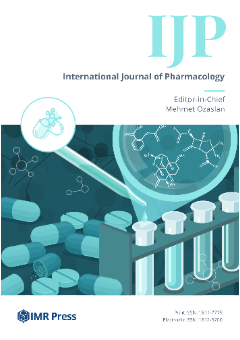International Journal of Pharmacology (IJP) is published by IMR Press from Volume 21 Issue 4 (2025). Previous articles were published by another publisher under the CC-BY licence, and they are hosted by IMR Press on imrpress.com as a courtesy and upon agreement.
Variation in Antioxidant Activity and Phenolic and Flavonoid Contents in the Flowers and Leaves of Ghaneri (Lantana camara L.) as Affected by Different Extraction Solven
The current study reports variation in antioxidant activity and phenolic and flavonoid contents in the flowers and leaves of a medicinal herb Ghaneri (Lantana camara L.) as affected by different extraction solvents (80% methanol, 80% ethanol, absolute methanol and absolute ethanol). The antioxidant activity was assessed by measuring the reducing power, inhibition in linoleic acid peroxidation and 2, 2-diphenyl-1-picrylhydrazyl radical (DPPH●) scavenging activity. Of the extracts tested, flower extract produced by 80% methanol possessed maximum amount of total phenolics (21.4 g GAE/100 g DW), total flavonoids (13.8 g CE/100 g DW), reducing power (0.095 for extract concentration of 1.0 mg mL-1), inhibition of linoleic acid peroxidation (83.3%) and DPPH radical scavenging activity (72.3%). A significant difference was observed for phenolic and flavonoid contents and antioxidant activity in relation to different extraction solvents and plant parts analyzed (p<0.05) thus prompting the need for utilization of appropriate solvent media and material for isolation of maximum amount of antioxidants. The results of this study explore the potential of L. camara as a rich source of natural antioxidants for development of functional foods and nutraceutical applications.

